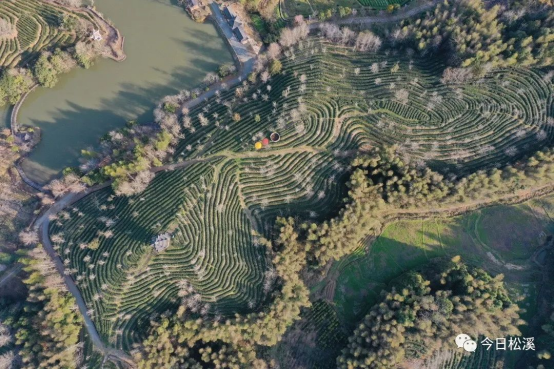The China-EU Agreement on Geographical Indications officially entered into force on March 1, 2021. It is China's first bilateral comprehensive and high-level agreement on the protection of geographical indications (GIs), and an important and practical outcome in the development of China-EU economic and trade relations in recent years.
We will continue to introduce to you the first batch of 100 Chinese GIs and 100 European GIs under the Agreement, to better protect and market them to meet the needs of consumers on both sides for a better life.
GI Episode 25: Fujian Tea (2)
Fujian sits by the sea and leans against mountains. It is amazing that the coastal province has mountains and hills for more than 80% of the area and tops the country in terms of forest coverage. The gravel soil is very suitable for the growth of tea, which makes Fujin one of major tea production areas in China. Fujian tops the country in the tea yield, output value and export growth rate. The oolong tea, black tea, white tea and jasmine tea ranking among the six major types of tea in China all originate from Fujian.
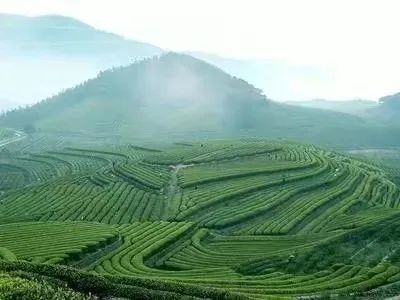

Where there are Chinese people, there must be Fujian tea. Tea culture is an important part of Fu culture (Fujian local culture) and even traditional Chinese culture. Since ancient times, along the Silk Road on land and sea, Lapsang Souchong, Red Robe, Tieguanyin, Aged White Tea and other Fujian tea spread their names at home and abroad. Going northward, we have the 10,000-li tea route starting in Chong’an (today’s Wuyishan City, Fujian Province) and stretching across the Eurasian continent to reach Central Asia and Eastern Europe; southward, Fujian tea sailed out of Quanzhou during the Song and Yuan dynasties. The tea together with the adventurous Fujianese ushered in the booming era of the port. The naming of tea by Western countries is said to be related to the Fujian dialect. Tea in the dialect of south Fujian is pronounced as “te” which was transliterated into Thee by the Dutch when they bought Fujian tea. Likewise, the “Tea” in English and the“Thé”in French are all transliterations of “te”.
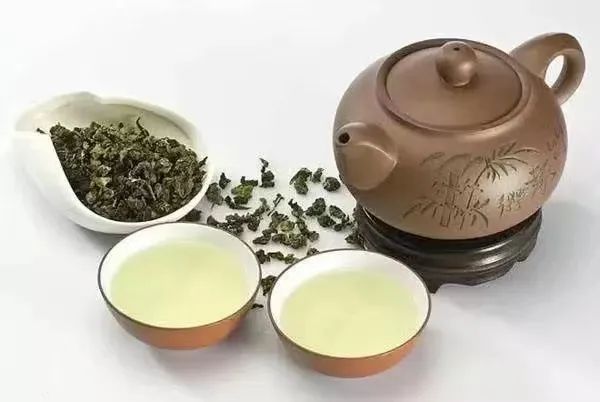
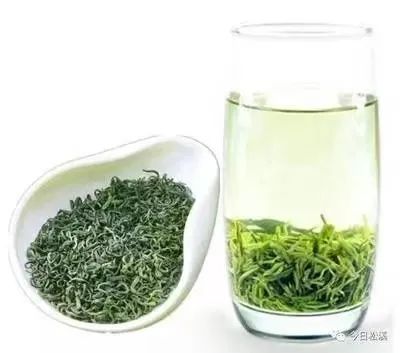
Fujian tea listed into Chinese GI products tops all selected tea in terms of both the number of types and the quantity. The Wuyi Rock Tea, Wuyi Mountain Red Robe and Lapsang Souchong we have introduced before all come from Fujian. Besides, Anxi Tieguanyin, Fuzhou Jasmine Tea, Panyong Congou, Fuding White Tea and Songxi Green Tea have also been included into the list of GI products; the five types of Fujian tea will be introduced in two issues. This issue focuses on Anxi Tieguanyin and Songxi Green Tea.
Anxi Tieguanyin
Anxi, home to Chinese oolong tea, is the origin of the world-famous tea Tieguanyin. The semi-fermented Tieguanyin is oolong tea and one of the ten most famous tea species in China. The fresh leaves of Anxi Tieguanyin, after fine manipulation, show color gradients and feature the mostly green part with red edges. The final product looks like Guanyin, carries a weight, and has rich aroma; a sip of the tea leaves an endless pleasant aftertaste.
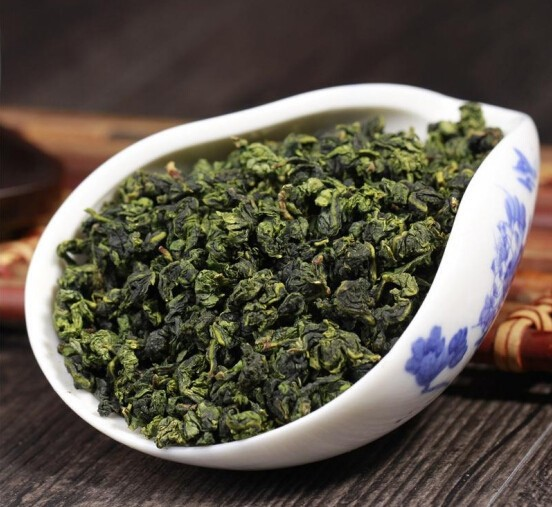
Anxi people pooled their strength and wisdom to solve difficulties. They were the first to come up with the “single node cutting” tea asexual propagation technology, to resolve the long-standing problem that the tea species was prone to change in propagation. Anxi people have invented the “semi-fermented” oolong tea production process that goes through 10 procedures in three stages over 36 hours of continuous production, so that the tea is very aromatic with its essence brought out, which is a tribute to the time-honored tea-making craftsmanship. The traditional tea production technique has been inscribed onto the National Intangible Cultural Heritage Protection List, and Anxi Tieguanyin Tea Culture System has been put onto the Tentative List of Globally Important Agricultural Heritage Systems. The tea industry has become the livelihood and pillar industry of Anxi County, with a total output value of 28 billion yuan in 2021.


Tea is an important carrier to promote world economic development and cultural integration. Anxi Tea has been a Chinese symbol on the ancient Silk Road since ancient times. During the Song Dynasty, 58 countries had trade relations with Anxi. In the 1930s, Anxi people opened more than 100 tea shops in Southeast Asia. In recent years, Anxi has actively joined in the endeavor to pursue the “Belt and Road” initiative. Anxi Tieguanyin has got its international trademark registered in 46 countries and regions. It has become a national gift and the tea to entertain state guests, shining on the stage of international exchanges, embodying the idea of “harmony and integrity” of Chinese culture, and contributing to building a new tea route on sea.
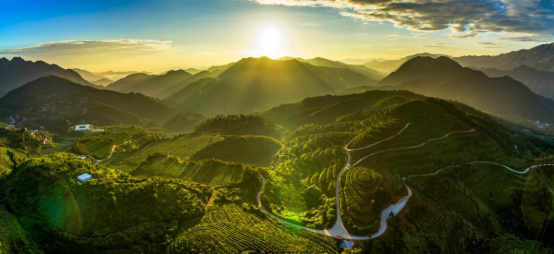
Songxi Green Tea
Songxi, located in the north of Fujian Province and at the source of the Minjiang River, is the largest export base of steamed green tea. Songxi Green Tea is a beautiful cultural card of Songxi, and the history of Songxi is immersed in the tea aroma of Qingyuan. According to historical records, since the Northern Song Dynasty, Songxi Green Tea has served as a royal tribute. By the 1980s, Songxi was in the forefront in terms of the tea yield and quality, known as the country with the best tea. Since then, it is widely known that Anxi in the south and Songxi in the north are blessed with premium tea.

The Songxi Green Tea leaves look beautiful and lustrous, with fine lines on the leaves packed tightly. The tea tastes mellow and has a sweet aftertaste; looks bright yellow-green; and gives off a lasting refreshing aroma, with the underside of the leaf being light green and bright. The tea is famous at home and abroad for its crystal clear soup, green color, mellow taste and refreshing aroma. Songxi Green Tea production consists of harvesting, sunning, fixation, cooling, shaping, drying, refining and other steps.

Endowed by nature and the long history, Songxi people understand more about the tea. By trying to seek the aroma and charm of tea, and carrying forward the way to go about in the world, local people have developed the unique tea-making process represented by steamed green tea and matcha.
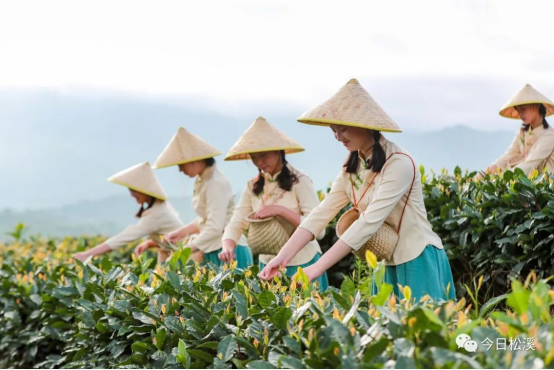
The Songxi Green Tea keeps the natural nutrients of tea as far as possible. It looks compact, green and lustrous, with a lasting refreshing aroma; it is diuretic and good at reducing fat. With outstanding quality, it is consumed by numerous people and has become their first choice of healthy beverage. Since the 2000s, Songxi has made the tea industry a pillar industry in the county’s economy, and has developed the industrial service, scientific research and development and quality monitoring systems. The output and quality of Songxi Green Tea keep going up and the tea has won many national awards. Today, the tea has a nationwide sales network and it is going global.
